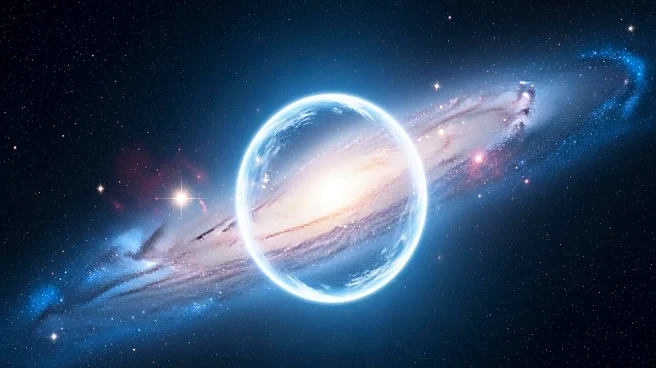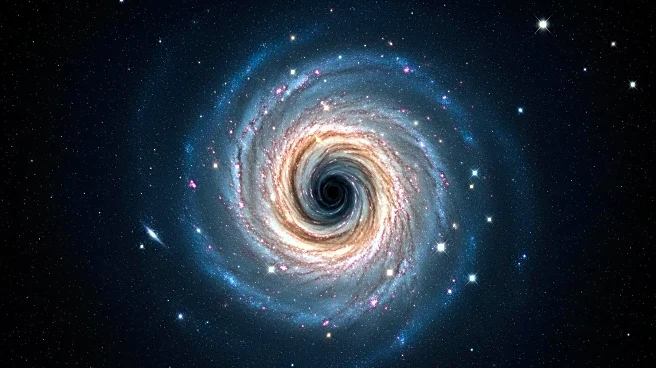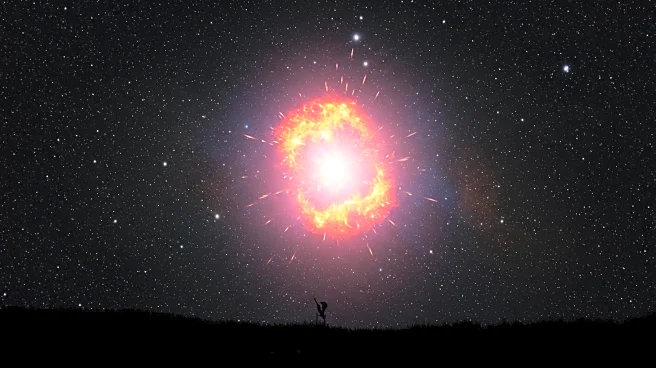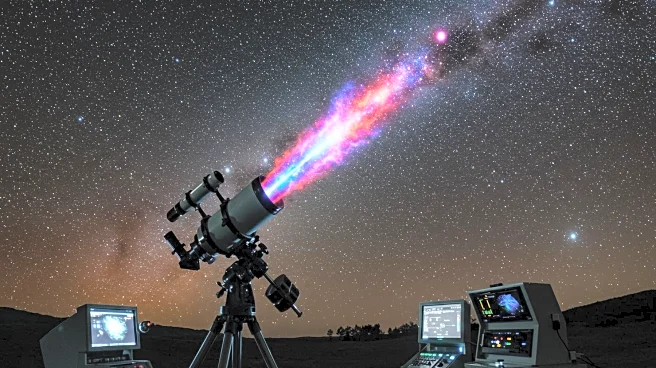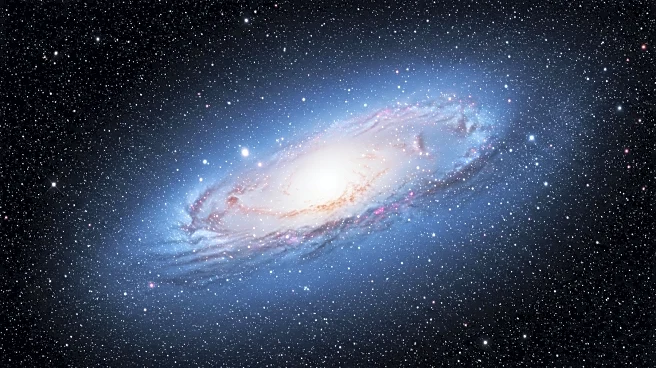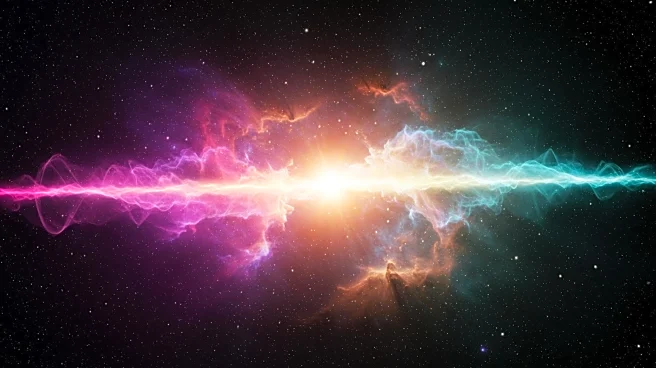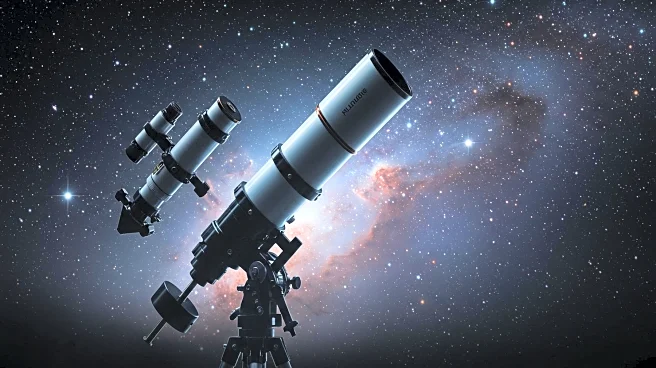What's Happening?
An international team of astronomers has discovered a new planet, WISPIT 2b, forming around a young star similar to our sun. The planet, likely a gas giant, was detected within a multi-ringed dust disk using the European Southern Observatory's Very Large Telescope. This discovery provides a unique opportunity to study planet-disk interactions and the early stages of planet formation. The planet's detection in both infrared and visible light indicates active gas accretion, contributing to its atmospheric development.
Why It's Important?
The discovery of WISPIT 2b offers valuable insights into the processes of planet formation and the diversity of planetary systems. Understanding these mechanisms can inform models of solar system evolution and the formation of exoplanets. The ability to observe a planet at such an early stage provides a rare opportunity to study the conditions that lead to diverse planetary systems, potentially advancing our knowledge of planet formation theories.
What's Next?
Researchers will continue to study WISPIT 2b and its surrounding disk to understand the dynamics of planet formation. The system may become a benchmark for future studies, attracting interest from the scientific community. Observations will focus on the interaction between the planet and its disk, providing insights into the evolution of planetary systems.


